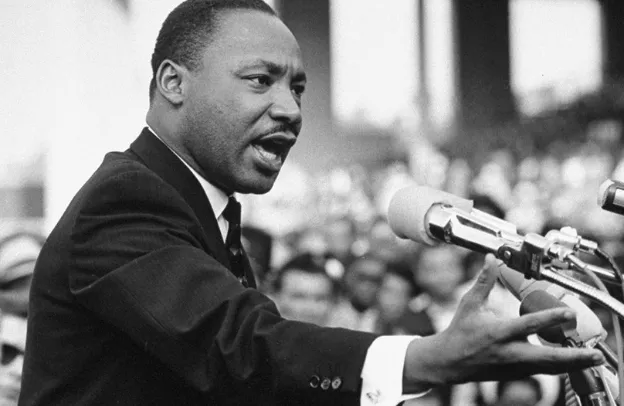The 125-Year-Old Story: What the Indianapolis Recorder Teaches Every Founder About Building a Real Legacy

Statistics paint a sobering picture for entrepreneurs. According to data frequently cited from the Small Business Administration and other sources, around 20% of new businesses fail within the first two years. That number jumps to 45% within five years and a staggering 65% within ten.
Learn How to Leverage Your Story through our Story To Asset Framework.
For Black-owned businesses, the climb is often steeper. Data has shown that eight out of ten fail within the first 18 months, facing systemic challenges in access to capital and resources.
Now, pause and consider this: In 1895, a business was founded.
This was not in Silicon Valley. This was in Indianapolis, Indiana. It was 30 years after the end of the Civil War, a year before the Plessy v. Ferguson Supreme Court decision declared “separate but equal” the law of the land. It was a time when the vast majority of the Black population was systematically locked out of the economy.
And yet, a business was born. More incredibly, that business is still thriving today, 129 years later. That business is The Indianapolis Recorder.
For established Diaspora leaders and multi-generational family businesses, the story of the Recorder is more than an inspiring piece of history. It is a practical, strategic blueprint. It answers the one question every successful founder eventually asks: “I’ve built it. Now, how do I make it last?”
The Recorder survived the Great Depression, Jim Crow, two World Wars, the Civil Rights movement, the digital revolution, and a global pandemic. It didn’t survive by accident. It survived because its leaders understood a fundamental truth that most businesses miss: Your story is not a byproduct of your business; it is the business.
And that story, when properly preserved and packaged, is your single most valuable asset.
From Two-Page Bulletin to Community Archive
Like many great enterprises, The Indianapolis Recorder started with a simple, unmet need. In 1895, George P. Stewart and Will Porter looked around and saw a community whose stories were not being told. The births, deaths, successes, and struggles of Black Indianapolis were invisible to the mainstream press.
Their solution was a humble, two-page church bulletin.
Think about the successful Diaspora coach or consultant today. You likely started your business for the same reason: you saw a community, a client base, a group of people who were being ignored, misunderstood, or underserved by the market. You built a platform to give them a voice—and in doing so, you gave them a solution.
See also MALCOLM X: Stan Bernard Interviews Malcolm X (February 18, 1965)
Stewart and Porter’s bulletin quickly evolved. By 1897, it was a weekly newspaper. By 1899, with Stewart as the sole publisher, the Recorder was already outperforming national competitors like The Freeman by focusing intensely on the local community.
It didn’t just report the news; it became the news. It was the trusted platform, the community mirror, and the advocacy megaphone.
This is the first lesson in legacy: Legacy isn’t built on what you sell; it’s built on what you stand for.
The Recorder wasn’t just selling papers. It was selling advocacy, identity, and empowerment.
- In the early 1900s, it championed anti-lynching laws, fair housing, and voting rights.
- During both World Wars, it was a powerful voice for the “Double V Campaign”—victory against fascism abroad and victory against racism at home.
- During the Civil Rights era, its pages documented the movements of Dr. Martin Luther King Jr., Malcolm X, and Thurgood Marshall, explaining their impact to the local community.
- It consistently spotlighted the pillars of the community, from Crispus Attucks High School to the Madam Walker Manufacturing Company, ensuring their achievements were etched into history.
The Recorder became the living archive of its people. It was the physical, tangible proof that “we were here, we mattered, and this is what we built.”
The Intentional Act of Legacy Preservation
This brings us to the most critical moment in any successful enterprise’s story. It’s the moment the founder’s initial vision is tested by time. The story could have ended, as so many do.
But it didn’t.
In 1990, the paper was acquired by William G. Mays, the visionary founder of Mays Chemical Company. This was not just a business transaction; it was a conscious act of legacy preservation.
Mays, a successful Black founder in his own right, looked at the Recorder and didn’t just see a newspaper. He saw an institution. He saw a 95-year-old story that was too valuable to lose. He invested in the paper to preserve its legacy and provided resources to modernize it.
This is a pivotal moment for every multi-generational family business. The first generation builds the story through grit and sacrifice. The second and third generations are tasked with a different, more complex mission: to steward, package, and re-broadcast that story for a new era.
Under the leadership of Mays’ niece, Carolene Mays, and later Shannon Williams, the Recorder transformed. They didn’t just keep the old press running; they restructured the finances, upgraded the editorial quality, and expanded the brand. They launched the Recorder On Air Report (ROAR) and the Indiana Minority Business Magazine.
See also Verona Job & Orienta: You are in a War for Talent. Your Story is Your Ultimate Weapon.
They took the core story, advocacy, empowerment, community, and put it into new, modern “containers.”
Today, under President and CEO Robert Shegog, the Recorder is experiencing a renaissance. In just the last five years, it has won over 100 journalism awards. It has expanded its newsroom, launched a national publication (Minority Business Review), and embraced a digital-first strategy. It reaches over 120,000 readers weekly.
It is not a museum piece. It is a living, breathing, growing entity, anchored by a 129-year-old story.
Your history is Your Highest-Value Asset
Here is the strategic takeaway for you, the established leader.
For the Multi-Generational Family Business:
You are proud of your 50+ year history. You value heritage and craftsmanship. But is that history living on a “timeline” page on your website, or is it a powerful, active asset?
The Recorder‘s history gives it an authority that a new media company simply cannot buy. That authority builds trust, justifies its position, and creates a moat around its business.
Your history does the same. When you commission a Signature Video or a beautifully crafted Legacy Book, you are not just creating a coffee table item. You are creating your single most powerful marketing asset. You are transforming your 50+ years of “doing business” into a tangible story that communicates trust, quality, and stability to your high-value clients before you ever walk into the room. It becomes the centerpiece of your brand, the proof of your promise.
For the Established Diaspora Leader:
You have spent 20+ years building your expertise. You’ve coached, founded, and led. You are now in “legacy mode.” Like William G. Mays, you have an opportunity to preserve what matters.
The Recorder expanded its legacy by creating the Journalism and Writing Seminars (JAWS) program, a pipeline to train the next generation of storytellers.
Your life’s work, your unique frameworks, and your hard-won wisdom cannot be allowed to retire with you. A Legacy Book is the container for your life’s work. It packages your 20+ years of expertise into a timeless asset that teaches, inspires, and establishes your “school of thought” for generations to come.
A Signature Video captures your voice, your presence, and your core message, immortalizing the “why” behind your success.
The Indianapolis Recorder began as a two-page bulletin. It became a blueprint for survival, a testament to resilience, and a masterclass in the power of owning your own story.
Your story, of struggle, of service, of building something from nothing, of sustaining it across generations, is not just a nice-to-have. It is your most valuable, enduring, and profitable asset.
It’s time to treat it that way.
Your legacy is your most valuable asset. Before you print another brochure or plan another marketing campaign, let’s talk about how to immortalize it.
Book your free 15-minute Legacy Strategy Call today to design the asset that will tell your story for the next 50 years.






